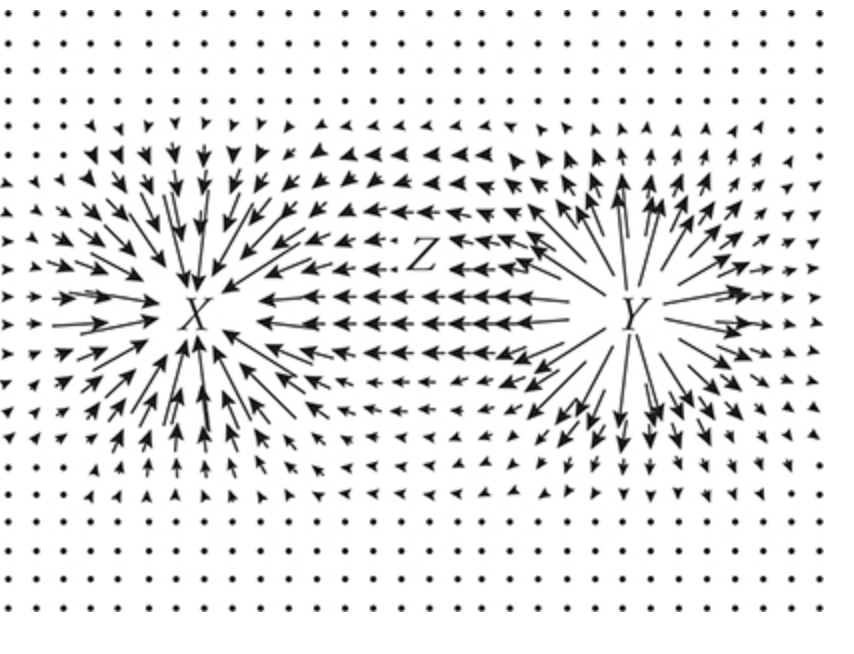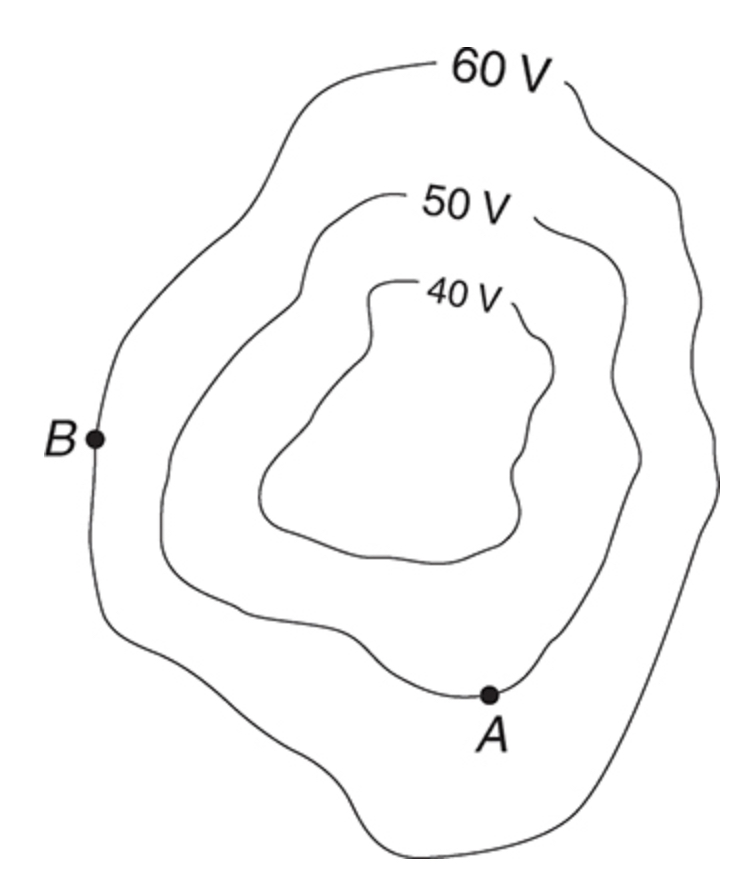Chapter 3 - Electric Force, Field, and Potential
Electric Charge
- Units of charge: Coulombs (C)
- One proton has a charge of 1.6 x 10^-19 C
- One electron has a charge of -1.6 x 10^-19
- When an object has more protons than electrons, it’s positively charged
- When an object has more electrons than protons, it’s negatively charged
- Like charges repel and opposite charges attract
- Quanta = the smallest package of a proton or electron that charge comes in
- Atomic Structure
- Atoms have protons (and neutrons) in the middle and electrons zipping around outside
- Electrons are easier to remove and in static electricity, we assume only electrons are being removed/added
- Law of conservation of charge - The initial charge of the system will always equal the final charge of the system
- Conductors vs insulators
- Generally, metals are good conductors and nonmetals are insulators
- Conductors - allow charge to move easily through them
- Insulators - don’t allow charge to move easily through them (held in place)
- There are 3 ways to charge an object:
- Charging by Friction - rubbing two objects like a fuzzy towel and iron rod results in electrons jumping from one object to the other
- Remember that net charge of the towel-rod system is still the same
- Charging by Contact or Conduction
- When a charged object comes in contact with a neutrally charged object, the electrons disperse so that both objects have the same charge sign
- Bigger objects end up with more charge because they have more room
- Insulators don’t allow as much charge to disperse through contact as conductors do
- Induced Charge, Polarization, and Induction
- Induced charge - a neutrally charged object becomes polarized (electrons clump up on one side of the object and positive charges pile on the other side)
- In AP Physics 2 questions, a grounding wire is often included
- The grounding wire essentially serves as an escape route for charges to escape from the polarized object
- Charge Distribution
- On conductors, excess charges are pushed to the outside of the object to get away from each other
- On insulators, excess charges stay where they are and don’t disperse
Electric Fields
Field: a property of a region that can apply force to objects found in that space
Electric fields affect charged particles only
Charged particles in electric fields experience an electric force

Electric fields are drawn as arrows because they’re vectors
- The longer the arrows, the greater the magnitude of the electric field
Units of electric fields: N/C (Newtons/Coulomb)
F = qE
- F: electric force
- q: charge
- E: electric field
The direction of the force on a positive charge is the same direction as the electric field
- The direction of the force on a negative charge is the opposite direction as the electric field
- Typically, when using the equation F = qE, we solve for the magnitude and find the direction of the electric force and/or field afterward
Electric Potential
Electric potential: Electric potential energy per unit charge (provided by an electric field)
- Units: 1 V = 1 J/C
- Electric potential is scalar (only have magnitudes)
- “Zero of electric potential” = “ground” = a theoretical distance at which two charged particles are infinitely far away from each other and therefore don’t affect each other
- ==ΔU = qΔV==
- ΔU = difference in electric potential energy
- q = charge
- ΔV = difference in electric potential
Equipotential lines: Lines on which a charged particle would have the same potential

- Equipotential lines are drawn perpendicular to the electric field lines
- It takes energy to move a charge to another equipotential line
- Positive charges are naturally pulled to areas of negative potential
- Negative charges are naturally pulled to areas of positive potential
- Remember that energy is conserved so U + K is constant
- U is electric potential energy and K is kinetic energy
Electrostatics
- Parallel Plates
- There are 2 metal plates that are parallel - one is positively charged and the other is negatively charged
- This creates a uniform electric field with the arrows pointing from the positive plate to the negative plate
- ==E = ΔV/Δr==
- E = the magnitude of the electric field
- ΔV = the magnitude of the voltage difference between plates
- Δr = the distance between plates
- Parallel plates can be used to make capacitors (a device that stores charges and will be further explored in circuits)
- ==ΔV = Q/C==
- ΔV = the voltage across plates
- Q = charge on each plate
- C = the capacitance of the capacitor
- ==C = kεA/d==
- C = capacitance
- k = dielectric constant - shows how good of an insulator you have between plates
- ε = “vacuum permittivity” = 8.85 x 10^-12 C/Vm
- Point charges
- ==E = q/(4πεr) = kq/r==
- k = Coulomb’s Law Constant = 9 x 10^9 Nm^2/C^2
- The electric field produced by a positive charge points away from the charge
- The electric field produced by negative charge points toward the charge
- ==V = kq/r==
- ==F = kqq/r^2==
- Where the two q’s are the charges of two point charges
- k = Coulomb’s Law Constant
- r = the distance between the two point charges
- Electric Field around a point charge or conducting sphere
- ==E = kq/r^2==
- To solve for the magnitude of the electric field
- Inside a conducting sphere, the electric field is 0
- Net force on any charge inside a conducting sphere is 0